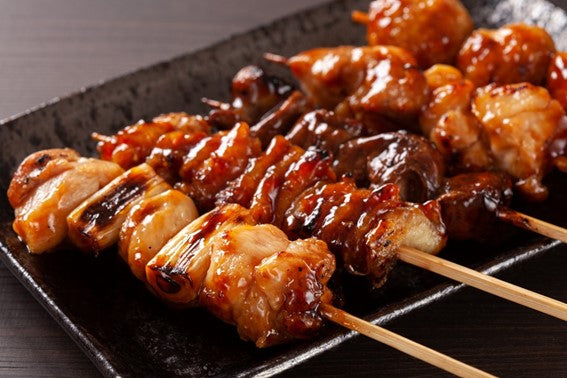Sake goes perfectly with many dishes.
The rich variety of sake flavors is enhanced by the meal it is served with.
In this article, titled "Pairing Sake and Meal", we will guide you on how to choose meals that match the type of sake.
Tips for Sake
Junmai-shu", "Ginjo", "Daiginjo", "Honjozo", "Kanzukuri", "Yamahai", "Namahashi" ...... There are many terms used in the sake brewing process. By reading the terms on the product, you can imagine what kind of flavor characteristics the sake has.
Mainly, there are two different ways to enjoy Sake: “Reishu (cold)” and “Kanzake (warmed)”, and it is known to have different flavors depending on the temperature.
Heated sake, which is served above room temperature, has several additional levels of serving temperature each with its own name.

Tips for Meal
Meals typically paired with sake are mainly Japanese cuisine.
In Japan, there are restaurants called "Izakaya", which are similar to pubs in the UK, and are popular among Japanese people as places where they can enjoy drinks and meals in a casual and low-priced atmosphere.
The food found at izakaya is basically "the kind of food you can eat at home," and is closer in sensation to fish and chips than to a full-course French meal.
The average price per customer at an izakaya is usually under 5,000 yen.
Sake, enjoy at different temperatures
Sake can be an enjoyable drink both warmed and cold.
Generally speaking, "Junmaishu" is suitable for warming and "Ginjoshu" is suitable for drinking cold.
Sake that is suitable for heating up will have its aroma enhanced by warming. Also, because it is close to body temperature, it is gentler on the stomach and the alcohol is absorbed more quickly. Since you become tipsy quickly, you are less likely to drink too much at once than with cold sake, and you can enjoy the sake at a leisurely pace.
Temperature and Name of Heated Sake
|
Hitohada-Kan (Body temperature) |
36℃(96.8°F) | About the same temperature as body temperature | Soft and gentle temperature in the mouth |
|
Nuru-Kan (Lukewarm) |
40℃(104°F) | Not too hot | The aroma is enhanced and the flavor of the sake expands. |
|
Jo-kan (Top warming) |
45℃(113°F) | Steam comes out when poured. |
The most typical temperature range. Taste and aroma are well-balanced. |
|
Atsu-Kan (Hot Sake) |
50℃(122°F) | Steam comes out of the bottle and it is hot to the touch |
Sharpens the aroma and taste. |
|
Tobikiri-Kan (Extremely hot) |
55℃(131°F) | Hot when you hold the bottle. |
The acidity is more pronounced and the taste is more dry. |
Sake, hot or cold?
Cold sake hardens the oils and fats on the tongue, so when drinking cold sake, it should be paired with a light, non-oily meal.
Hot sake, on the contrary to cold sake, helps to wash away any remaining flavor on the tongue, making it suitable for oily or strongly seasoned dishes.

Pairing Sake and Meals
When pairing sake and meal, there are three major balances to consider.
(1) Sake rank (Junmaishu, Ginjo, Honjozo, etc.)
(2) Temperature of sake (Cold or Hot)
(3) Type of food (refreshing, light, or strong-flavored food, etc.)
Ginjoshu and Meals
In the past, Daiginjo in particular are the best served cold because of its delicate body.
However, recently, Some of Daiginjo that can be drunk hot, while taking advantage of the flavor of Daiginjo.
Meals to match: salads, grilled vegetables, sashimi, grilled fish, carpaccio, cold tofu, cream cheese, etc. Desserts and fruits are also a good match.
Sake Recommendation: “THE” : This daiginjo is best enjoyed either warmed or chilled. One of the rarest sakes in Japan.
Junmaishu and Meals
Junmaishu and honjozo have a stable body, so they do not lose their flavor whether served cold or hot. You can taste the natural sweetness and deep richness of rice, making it perfect for highly seasoned dishes.
Smoked foods, delicacies, hard cheeses, tempura, meat dishes, pie dishes, boiled fish, etc.
Sake Recommendation: “Kamihotoke” : Made using ancient traditional methods.
Other Sake
Junmaishu is sake made from "100% rice," while honjozo is sake "manufactured with alcohol intentionally added”.
For example, there is a type of honjozo called "Hakkaisan" that has many fans for its traditional taste.
Hakkaisan is characterized by its modest aroma and light, dry taste.
It is easy to drink, with no peculiarities, whether cold or hot, and goes well with pasta, ramen, Chinese food, meat and potatoes, curry, and other dishes.
Recently, alcohol, known as "sparkling sake," has become a common sight in the market. Many of them are sweeter than regular sake and have a lower alcohol content, making them suitable for people who are not used to drinking sake.
The bubbles that rise when poured into a glass are also impressive and can be enjoyed like champagne.
It goes well with starter-like appetizers and sweets, fruits, and cakes.
Sake Recommendation: “BUBBLE” : Popular sparkling sake for all occasions
Summary
Sake is said to have a history of approximately 2,000 years.
Although brewing methods have changed over time, sake has evolved in close association with Japanese culture. In modern times, sake has come to be enjoyed overseas as well. We would be very happy if people could learn more about Japan through the taste of sake.

